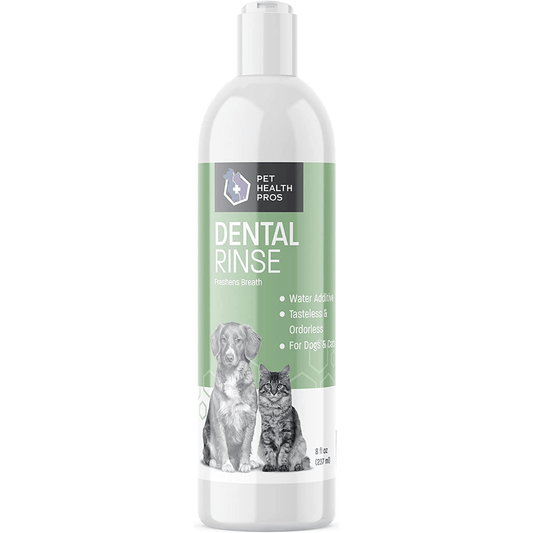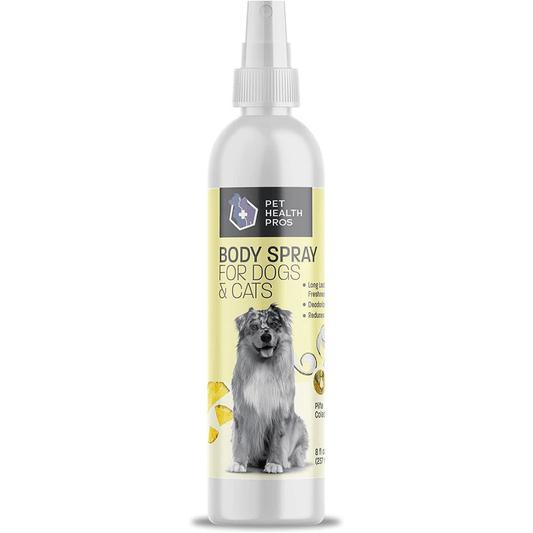If you're a cat owner, you may have heard about Benadryl and its potential uses for your feline friend. This common antihistamine can be helpful in certain situations, but it's important to understand how to use it safely and effectively. In this article, we'll explore what Benadryl is, how it works for cats, and the guidelines for its proper use.
Key Takeaways
- Benadryl is an antihistamine that can help with allergies in cats.
- Always consult your veterinarian before giving Benadryl to your cat.
- Dosage is typically based on your cat's weight, so proper measurement is crucial.
- Watch for side effects like drowsiness or dry mouth after administration.
- Consider natural alternatives or other medications if Benadryl isn't suitable.
Understanding Benadryl and Its Uses for Cats
What Is Benadryl?
Benadryl, known generically as diphenhydramine, is a common over-the-counter antihistamine. It's often found in medicine cabinets and used to treat allergies in people, but it can also be used for cats under certain circumstances. It's important to understand that while it's available without a prescription, it's not always safe for every cat. It works by blocking histamine, a substance released by the body during an allergic reaction.
Common Uses in Feline Medicine
Benadryl can be used to treat a variety of conditions in cats, including:
- Allergies: It can help relieve symptoms like itching, sneezing, and runny eyes caused by environmental or food allergies.
- Insect Bites and Stings: Benadryl can reduce swelling and itching from insect bites or stings.
- Motion Sickness: It can help prevent nausea and vomiting during car rides or other travel.
- Mild Sedation: In some cases, Benadryl can be used as a mild sedative to calm anxious cats during stressful situations like vet visits or thunderstorms.
It's important to note that Benadryl is not a cure for these conditions, but it can help manage the symptoms. Always consult with your vet to determine the underlying cause of your cat's symptoms and develop an appropriate treatment plan.
How Benadryl Works in Cats
Benadryl works by blocking histamine receptors in the body. Histamine is a chemical released by the body during an allergic reaction, and it causes symptoms like itching, sneezing, and inflammation. By blocking these receptors, Benadryl can reduce or eliminate these symptoms. However, it's important to remember that Benadryl can also have some side effects, such as drowsiness and dry mouth. The effectiveness of Benadryl can vary from cat to cat, and it may not be the best option for every situation. Always talk to your vet before giving your cat Benadryl to make sure it's safe and appropriate for their specific needs.
Safety Considerations When Using Benadryl for Cats
Okay, so you're thinking about giving your cat Benadryl. That's cool, lots of people do it. But before you go ahead, let's talk safety. It's not always a walk in the park, and there are definitely things you need to know to keep your furry friend safe. I mean, we all love our cats, right? So, let's do this the right way.
Potential Side Effects
Alright, so Benadryl can cause some side effects in cats, just like it does in people. The most common one? Drowsiness. Your cat might seem extra sleepy or a bit out of it. Some cats get the opposite effect, though, and become hyperactive or restless. It's weird, I know. Other possible side effects include:
- Dry mouth: You might notice your cat drinking more water.
- Urinary retention: Keep an eye on their litter box habits.
- Increased heart rate: This one's harder to spot, but something to be aware of.
If you notice any of these side effects, especially if they seem severe, it's best to call your vet. They can give you advice on what to do next. It's always better to be safe than sorry, right?
Contraindications and Precautions
Now, this is important. Benadryl isn't safe for all cats. There are certain conditions that make it a no-go. For example, if your cat has glaucoma, Benadryl can make it worse. Same goes for heart disease or high blood pressure. And if your cat has an overactive thyroid, you should definitely avoid Benadryl. Also, if your cat is pregnant or nursing, it's best to steer clear. It's just not worth the risk to the kittens.
Here's a quick list of situations where you should avoid Benadryl:
- Glaucoma
- Heart disease
- High blood pressure
- Hyperthyroidism
- Pregnancy or nursing
It's super important to know your cat's health history before giving them any medication, even something over-the-counter like Benadryl. If you're not sure, just ask your vet. They know your cat best and can tell you if Benadryl is safe.
Consulting Your Veterinarian
Seriously, talk to your vet before giving your cat Benadryl. I know it seems like a hassle, but it's really the best thing you can do. Your vet can tell you the right dose for your cat based on their weight and health condition. They can also warn you about any potential drug interactions if your cat is already taking other medications. Plus, they can help you figure out if Benadryl is even the right solution for your cat's problem. Maybe there's a better option out there. Think of it this way: a quick call to the vet can save you a lot of worry and potentially protect your cat from harm. It's a small step that makes a big difference. You can also ask about allergy symptoms to be aware of.
Dosage Guidelines for Benadryl in Cats
Recommended Dosage Based on Weight
Okay, so you're thinking about giving your cat Benadryl. The most important thing? Getting the dosage right. Too much can be really bad news for your furry friend. It's all about their weight, so grab those scales (the cat ones, if you have them!).
Generally, a safe dose is around 1mg of Benadryl per pound of body weight. But, and this is a big but, always start with the lowest possible dose and see how your cat reacts. Some cats are more sensitive than others. I've seen some people suggest a slightly lower range, like 0.5mg to 1mg per pound, just to be extra cautious.
Here's a super simple table to give you a rough idea:
| Cat's Weight (lbs) | Benadryl Dosage (mg) |
|---|---|
| 5 | 2.5 - 5 |
| 10 | 5 - 10 |
| 15 | 7.5 - 15 |
Remember, this is just a guideline. Liquid Benadryl often has a different concentration than the pills, so double-check the label. And seriously, talk to your vet before giving your cat anything.
How to Administer Benadryl
Alright, you've got the right dosage figured out. Now comes the fun part: actually getting your cat to take it. Cats, as we know, aren't always the most cooperative patients.
Here are a few tricks I've picked up over the years:
- Pill Pockets: These are your best friend. They're basically little treats with a hole in them for hiding pills. Most cats gobble them right up.
- Compounding Pharmacy: If your cat absolutely refuses pills, ask your vet about getting the Benadryl compounded into a flavored liquid. Chicken or tuna flavor usually does the trick.
- Pill Crusher: Crush the pill and mix it with a small amount of wet food. Make sure they eat all of the food to get the full dose.
- Directly: If you're brave (and your cat is chill), you can try pilling them directly. Gently hold their mouth open and pop the pill as far back on their tongue as possible. Follow with a little water to help them swallow.
No matter what method you choose, stay calm and patient. Getting stressed out will only make your cat more stressed, and it'll turn into a battle. And always, always make sure they actually swallow the medication. I once thought my cat had taken his pill, only to find it stuck to the couch later.
Signs of Overdose to Watch For
Okay, so you've given your cat Benadryl. Now, keep a close eye on them. Overdosing on Benadryl can be serious, so it's important to know what to look for.
Here are some signs that your cat might have gotten too much:
- Extreme Sedation: A little drowsiness is normal, but if your cat is completely out of it and unresponsive, that's a red flag.
- Excitement or Agitation: Paradoxically, some cats get hyperactive or agitated from Benadryl, especially at high doses.
- Dilated Pupils: Check their eyes. If their pupils are really big and don't seem to be reacting to light, that's a sign of trouble.
- Rapid Heart Rate: If their heart is racing, that's another warning sign.
- Difficulty Breathing: This is an emergency. Get them to a vet immediately.
If you notice any of these signs, call your vet or an emergency animal hospital right away. It's always better to be safe than sorry. And remember, Benadryl isn't a long-term solution. If your cat has allergies, work with your vet to find the underlying cause and develop a treatment plan.
Alternatives to Benadryl for Cats
Other Antihistamines
So, Benadryl isn't the only option when your cat is dealing with allergies. There are other antihistamines that your vet might suggest. These alternatives can sometimes be more effective or have fewer side effects, depending on your cat's specific needs. Some common ones include:
- Chlorpheniramine: This is another first-generation antihistamine, similar to Benadryl, but it might work better for some cats.
- Loratadine (Claritin): A second-generation antihistamine that typically causes less drowsiness than Benadryl.
- Cetirizine (Zyrtec): Another second-generation option, also known for causing less sedation.
It's super important to chat with your vet before switching to any of these. They can help you figure out the right one and the correct dosage for your furry friend.
Natural Remedies for Allergies
If you're looking for something a bit more natural, there are a few things you could try. These aren't always as strong as medications, but they can sometimes help with mild allergy symptoms. Here are some ideas:
- Omega-3 Fatty Acids: Adding these to your cat's diet can help reduce inflammation and improve skin health. You can find them in fish oil supplements.
- Probiotics: These can help boost your cat's immune system, which might help with allergies. Look for probiotics specifically made for cats.
- Herbal Remedies: Some people use herbs like chamomile or calendula to soothe irritated skin. But be super careful, because not all herbs are safe for cats. Always double-check with your vet first!
When to Seek Veterinary Help
Okay, so you've tried some things, but your cat is still super itchy and miserable? Time to call the vet. Don't wait too long, especially if you see any of these signs:
- Severe itching or scratching that won't stop
- Skin infections or open sores
- Difficulty breathing or wheezing
- Swelling of the face or throat
Sometimes, allergies can be a sign of something more serious, so it's always best to get a professional opinion. Plus, your vet can run tests to figure out exactly what your cat is allergic to and come up with a plan to help them feel better.
Understanding Allergies in Cats
Common Allergens for Cats
So, what exactly is making your cat so itchy? Well, just like people, cats can be allergic to a whole bunch of stuff. The most common culprits are things like fleas, food ingredients, and environmental allergens.
- Fleas: These little critters are a huge problem. Even one flea bite can set off a major allergic reaction in some cats.
- Food: Certain ingredients in cat food, like beef, fish, or dairy, can cause allergies. It's often a process of elimination to figure out which one is the offender.
- Environmental Allergens: Think pollen, mold, dust mites – the same things that bother us can also bother our feline friends. These allergies tend to be seasonal, but some cats can have them year-round.
Symptoms of Allergies in Cats
Okay, so how do you know if your cat actually has allergies? It's not always obvious, but there are some telltale signs to watch out for.
- Excessive Scratching: This is probably the most common sign. If your cat is constantly scratching, especially around their head and neck, allergies could be to blame.
- Skin Problems: Look for redness, bumps, or hair loss, especially if it's accompanied by scratching. Sometimes cats will develop small, crusty sores.
- Respiratory Issues: Allergies can also cause respiratory problems like coughing, sneezing, or wheezing. It might sound like your cat has a cold, but it could be allergies.
- Digestive Issues: Some cats with food allergies will have vomiting or diarrhea. If your cat's tummy is constantly upset, it's worth considering allergies as a possible cause.
Long-Term Management of Allergies
Dealing with cat allergies is often a long game. It's not usually a one-time fix, but more about managing the symptoms and minimizing exposure to allergens. Here's what that might look like:
- Flea Control: Keep your cat on a regular flea prevention program, even if they're an indoor cat. Fleas can hitch a ride on you or other pets.
- Diet Changes: If you suspect a food allergy, talk to your vet about trying a hypoallergenic or limited-ingredient diet. It can take several weeks to see if it makes a difference.
- Environmental Control: Keep your house clean and dust-free. Air purifiers can also help reduce allergens in the air. For pollen allergies, try to keep your cat indoors during peak pollen seasons.
- Medications: In some cases, your vet might recommend medications like antihistamines or corticosteroids to help control the symptoms. These can provide relief, but they often have side effects, so it's important to use them under veterinary supervision.
It's important to remember that every cat is different, and what works for one cat might not work for another. Working closely with your vet is the best way to figure out the right approach for your furry friend. They can help you identify the allergens, manage the symptoms, and keep your cat comfortable and happy.
The Importance of Veterinary Guidance
Why You Shouldn't Self-Medicate
Giving your cat medication without talking to a vet first? Not a good idea. It's like trying to fix your car without knowing anything about engines – you might make things worse. Cats are not small humans, and their bodies react differently to drugs. What's safe for us can be harmful, even deadly, for them. Plus, you might not even be treating the right problem. Allergies can look like other illnesses, and you could be masking symptoms instead of dealing with the real issue.
- Incorrect dosage can lead to toxicity.
- Underlying conditions might interact negatively with the medication.
- You could delay proper diagnosis and treatment.
Self-medicating your cat can have serious consequences. It's always best to get a vet's opinion to ensure you're doing what's best for your furry friend.
How to Discuss Benadryl with Your Vet
Okay, so you're thinking about Benadryl for your cat. Great! The next step is chatting with your vet. Write down all your cat's symptoms, when they started, and anything that seems to make them better or worse. Also, list any other medications or supplements your cat is taking. When you talk to the vet, be clear about why you're considering Benadryl. They can then assess if it's the right choice and give you the correct dosage. Don't be afraid to ask questions! It's important to understand the risks and benefits.
Monitoring Your Cat's Response to Treatment
So, the vet gave the go-ahead for Benadryl. Now what? Keep a close eye on your cat. Is the Benadryl helping with the symptoms? Are there any side effects? Write everything down. If you see anything weird, like your cat is super sleepy, restless, or not eating, call your vet right away. It might mean the dose is too high, or that Benadryl isn't the right medication for your cat. Regular check-ins with your vet are key to making sure your cat is doing well on the treatment.
- Note any changes in behavior.
- Monitor for side effects.
- Keep your vet informed.
Getting advice from a vet is really important for your pet's health. They can help you understand what your pet needs, from food to vaccinations. If you want to keep your furry friend happy and healthy, make sure to talk to a vet regularly. For more tips and information, visit our website today!
Final Thoughts on Benadryl for Cats
In conclusion, using Benadryl for cats can be a helpful option for certain conditions, but it’s not without risks. Always consult your vet before giving any medication to your cat. They can provide the right dosage and ensure it’s safe for your pet’s specific health needs. Remember, what works for one cat might not work for another. So, keep an eye on your furry friend and report any unusual behavior to your vet. With the right guidance, you can help your cat feel better while keeping them safe.
Frequently Asked Questions
Can I give my cat Benadryl for allergies?
Yes, Benadryl can be used for cats with allergies, but you should always check with your vet first.
What is the right dose of Benadryl for my cat?
The usual dose is about 1 mg per pound of your cat’s weight, but you must confirm this with your vet.
Are there any side effects of Benadryl for cats?
Some cats may get sleepy, have a dry mouth, or feel dizzy. If you notice anything unusual, contact your vet.
Can I use Benadryl for my cat's anxiety?
Yes, Benadryl can sometimes help with anxiety, but talk to your vet to ensure it's safe for your cat.
Are there alternatives to Benadryl for cats?
Yes, there are other antihistamines and natural remedies, but you should discuss these options with your vet.
How can I tell if my cat is having an allergic reaction?
Look for symptoms like itching, sneezing, or swelling. If you see these signs, contact your vet right away.








